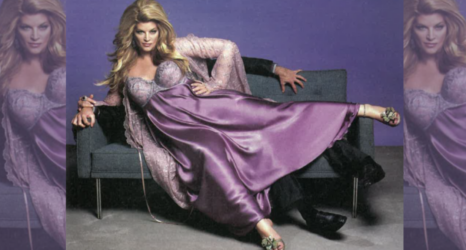During every yoga class, my teacher said it: “If you can breathe, you can do yoga.”
Given that this is true, why do so many American yoga practitioners look the same? Why has “doing yoga” and “wearing yoga pants” become ready joke fodder about slender, young, sorta-clueless, upper-middle-class white women?
Yoga has become a modern cultural phenomenon—one especially salient to women. And just to be clear, three things are at issue in the discussion: the yoga practice, North American yoga culture and bodies. The yoga practice contains numerous millennia-old and modern practices originating in India. North American yoga culture focuses most on flexibility and athleticism and does as much to promote body image obsession, looksism and consumer fashion concerns as any other aspect of North American culture.
And then there’s the body. The place where we actually live, practice and ruminate; the container by which others perceive and judge us. There is no more important issue in North American yoga culture and the feminism of yoga practice than body image.
And that’s why a new book, Yoga and Body Image: 25 Personal Stories About Beauty, Bravery & Loving Your Body, is a must-read for anyone who’s ever done yoga, avoided yoga or wondered about the relationships among fitness, feminism and self-awareness. Assembled by Melanie Klein (a professor of sociology and women’s studies and a Ms. blogger) and Anna Guest-Jelley (the founder of CurvyYoga.com), it offers essays to think about, touching stories to motivate and real connections to a community of people continuing to grapple with these themes. The anthology also contains voices (including another Ms. blogger, Audrey Bilger) we don’t often hear from in North American yoga culture—including people of diverse races, genders (five men, the rest women), sexual orientations, physical abilities, sizes, ages and more.
The topics in the book aren’t new—many of us have been speaking and writing about them for years in various small venues—but these discussions don’t often come into mainstream media. The beauty of the essays is that they are both personal and cultural, while collectively they speak about how the pursuit of “perfection” harms us as it marginalizes and excludes a lot of people who could enjoy and benefit from yoga practice. As the introduction points out
As it’s practiced in the West today, yoga has the possibility of becoming a way into a deeper, more positive relationship with one’s body—and it also has the possibility of reinscribing limiting beauty and body norms.
Marianne Elliott’s essay, “How Shame Found me on the Yoga Mat,” tackles the negative meanings we ascribe to things like “tight hips” or the inability to follow a teacher’s authoritative instructions. “It was clear from his tone and expression that tight was not what my hip was supposed to be,” she writes. In the section titled “On the Margins” Dianne Bondy’s essay acknowledges the radical nature of her identity in her title, “Confessions of a Fat, Black Yoga Teacher.” She unpacks how “being called fat can be worse than a racial slur. I’ve had to endure both, and what saved me was yoga.”
In numerous ways, Yoga and Body Image is a book about transformation, both personal and cultural. Many of us can recall the complexities of our feminist awakenings: how it’s possible to emerge from patriarchal definitions of ourselves while still sometimes being invested in them. In Nita Rubio’s essay, “Beauty, Value and the Feminine Roots of Yoga” she recalls realizing that men, the culture and even she herself “believed in the men’s sovereignty and authority” over her own. In order to have greater access to her body, she’d need to confront “everything in my mind that worked against walking in the world liberated from all of my own self-deceit and self-hatred.” Moreover, she acknowledges that a “ community of women” is important, combating competition and comparison: “My journey was deeply guided by and tied to the other women’s journeys in the classes.”
Yoga and Body Image includes some “celebrity” contributors as well, such as singer-songwriter Alanis Morissette. Seane Corn, one of the first celebrity yoga teachers, offers a moving account of how she realized that her early success as a media spokesperson for yoga
wasn’t because I was the most brilliant yoga teacher there was. Far from it … I was young, insecure and inexperienced. … My fast-tracked success was about timing, luck and, to be very frank, the fact I happened to fit into a certain physical mold, a specific look that people seemed attracted to: I was thin, flexible, strong, pretty and white. I fit into a mainstream ideal that could be marketed and used to help commercialize yoga.
Corn apologizes for her early role in this commercialization and goes on to discuss aging in this public role as well. In Yoga and Body Image, these “celebrity” essays are offered for the diversity of their perspectives on body image, yoga and the media, not merely to increase the book’s visibility.
Perhaps most significantly, Yoga and Body Image concludes with an invitation for further dialogue and resources for further study. Each of the contributors’ websites is included, too. As Klein’s introduction reminds us, “creating a healthy relationship to self and healing a fractured body image is a work in progress, like anything meaningful and long lasting.”





